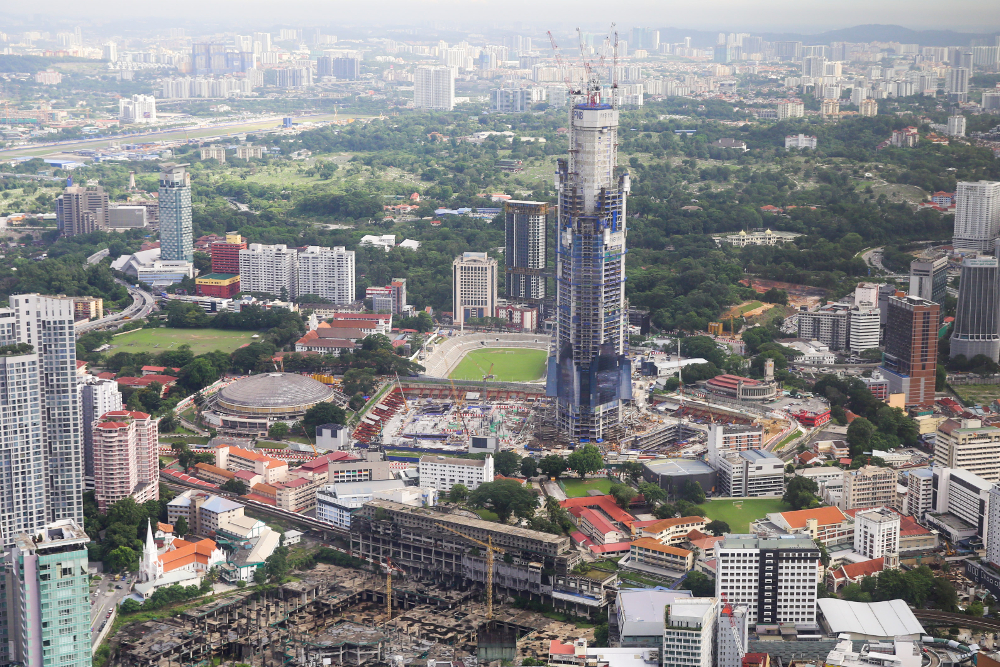
KUALA LUMPUR, Dec 10 ― The property market remains soft this year.
This is despite the cautious optimism towards the nation’s projected gradual economic recovery, with the resumption of market activity under the recovery movement control order and the proposed measures under the National Economic Recovery Plan (Penjana).
The pace of improvement will be dependent on both domestic and external factors such as political stability, global oil and commodity prices, as well as further developments related to the Covid-19 pandemic.
According to the National Property Information Centre (NAPIC), the property market’s performance recorded a sharp decline in the first half (1H) of 2020, in consonance with the Malaysian economic performance, which contracted by 17.1 per cent in the second quarter (Q2) of 2020. (Q1 2020 was at 0.7 per cent).
However, Malaysia's Gross Domestic Product in Q3 2020 decreased at a slower pace of 2.7 per cent from the double-digit decline of 17.1 per cent in the Q2 2020.
For the 1H 2020, the property sector recorded 115,476 transactions worth RM46.94 billion, a decrease by 27.9 per cent in volume and 31.5 per cent in value compared with 1H 2019, which recorded 160,165 transactions worth RM68.53 billion.
While in Q3 2020, NAPIC said the volume of transactions and yearly change recorded an improvement with 89,245 units from 83,085 units in Q3 2019, with 7.4 per cent from 5.5 per cent in the same quarter last year, respectively.
This was led by the residential sub-sector, followed by agriculture, development land and others, commercial and industrial.
Transaction value in total for Q3 2020, however, declined to -2.4 per cent from 4.6 per cent year-on-year with RM33.78 billion from RM34.62 billion previously.
To encourage homeownership, the government has reintroduced the Home Ownership Campaign (HOC) under Penjana, which will attract more first-time buyers into the market in the 2H 2020, said market players.
They said the move would make it easy for buyers to get into the property market and would alleviate the current oversupply of unsold properties in the market.
Under the HOC, stamp duty exemption would be given on the instruments of transfer and loan agreement for the purchase of residential homes priced between RM300,000 and RM2.5 million subject to the developer providing at least a 10 per cent discount.
The exemption on the instrument of transfer is limited to the first RM1 million of the housing price while full stamp duty exemption is given on loan agreement effective for sale and purchase agreements inked between June 1, 2020 and May 31, 2021.
In short, this would allow a much lower payment or even no stamp duty at all for property purchase.
Besides, Bank Negara Malaysia's decision to maintain the overnight policy rate at 1.75 per cent in September as global economy continued to improve, coupled with strong policy support, is also an attraction for house seekers, as a low interest rate would give a head start in interest rate savings.
Backed by these efforts, the Real Estate and Housing Developers’ Association Malaysia is cautiously optimistic about the outlook for the property sector, and hopes for a better improvement in the 1H 2021, provided there is no new community transmissions of Covid-19 in the country.
On another note, the property market has experienced a correction in terms of pricing with more affordable housing launched in the 1H 2020.
According to NAPIC director Aina Edayu Ahmad, half of the new launches in 1H 2020 comprised houses priced at RM300,000 and below (6,657 units), while the RM300,001-RM500,000 range of houses accounted for 28.9 per cent (4,476 units) and houses priced over RM500,000 accounted for 21.1 per cent (2,161 units).
In Q3 2020, NAPIC said new launches in the residential sub-sector recorded 6,087 units in volume, which include 2,960 units of high-rise properties and 3,127 units of landed properties.
Prices ranging below RM300,000 in Q3 2020 made up 50.5 per cent (3,073 units), while the prices for the RM300,001-RM500,000 range 24.7 per cent (1,505 units), and those above the RM500,001 range comprised 24.8 per cent (1,509 units).
“So, we see that the market has done its own correction. In the past years, we have seen more new launches in the higher range but now we are seeing more new launches in the range of RM300,000 and below,” she said during the 13th Malaysian Property Summit in October.
In terms of pricing, she said properties priced RM300,000 and below in the residential segment are still capturing most of the market demand, which is why property developers should focus on having more affordable houses in this price range.
Aside from this, as the property market is still dealing with the effects of the COVID-19 pandemic in Q3 2020, asking prices across Kuala Lumpur, Selangor, Penang and Johor have moved in a downward trend, based on PropertyGuru Malaysia's Property Market Index.
The property site said overall asking prices for property in Malaysia dropped by 1.34 per cent this quarter; in contrast to the 0.38 per cent increase registered in Q2 2020 and 0.63 per cent increase in Q1 2020.
On a different note, to resolve the issue of unsold completed residential units and ensure a more organised property development in the country, the Housing and Local Government Ministry is developing the Housing Integrated Data System, which is expected to be ready next year.
Minister Zuraida Kamaruddin has also said that the ministry has proposed a “vacancy tax” to be introduced and imposed next year, to developers who fail to clear their outstanding residential stock.
She said based NAPIC's record, a total of 31,661 houses worth RM20.03 billion were unsold in the first quarter of this year compared with 30,664 units amounting to RM18.82 billion in 2H 2019. ― Bernama

